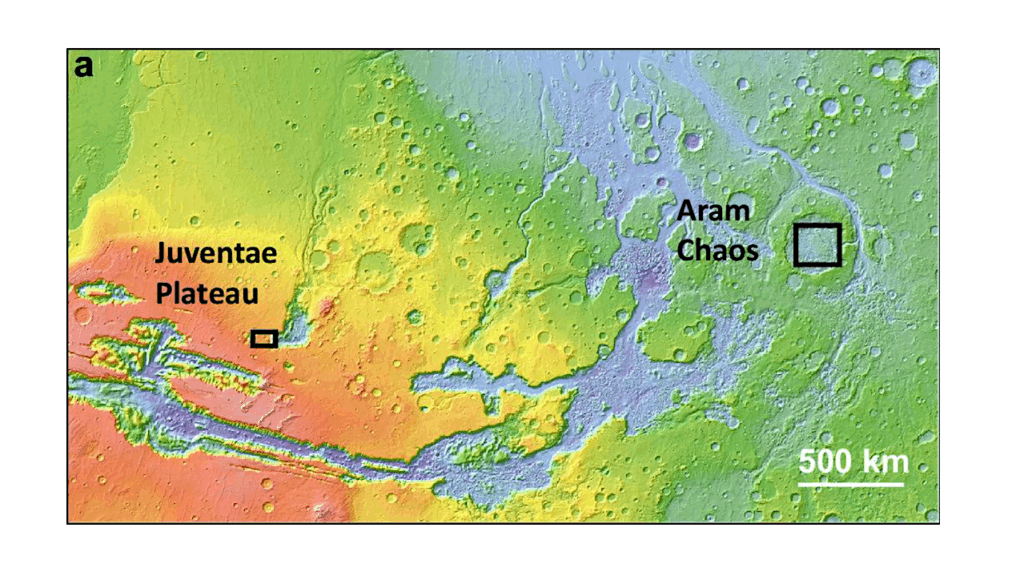
Recent research has revealed the presence of ferric hydroxysulfate (Fe3+SO4OH) on Mars, shedding light on the planet’s geochemical history. This unusual iron-sulfate mineral has intrigued scientists for over a decade due to its distinct spectral characteristics and its association with layered sedimentary rocks. The findings indicate that this mineral may provide critical insights into the processes that shaped Mars’ surface.
The detection of ferric hydroxysulfate is significant as it forms under specific conditions. It is produced by heating hydrous ferrous sulfates to temperatures of at least 100 °C. The mineral exhibits a strong spectral band at 2.236 μm, which matches observations made in two Martian locations: Aram Chaos and the plateau above Juventae Chasma. Both sites are believed to have undergone evaporative processes or low-temperature alterations that led to the formation of hydrated sulfates.
Understanding the formation of ferric hydroxysulfate offers insights into the geological activities that may have taken place on Mars. Unlike hydrated sulfates, which typically form through evaporation, the presence of Fe3+SO4OH suggests processes involving heating and oxidation. This could result from volcanic activity, particularly the deposition of lava or ash, or hydrothermal processes that may have altered existing sulfates.
Implications for Martian Geochemistry
The implications of this discovery extend beyond the mere identification of a new mineral. The presence of ferric hydroxysulfate indicates a more complex geochemical environment than previously understood. The mineral’s occurrence in sedimentary formations suggests that Mars may have experienced varied geological processes that influenced its surface composition.
A detailed analysis of the mineral was conducted using data from the Mars Orbital Laser Altimeter (MOLA) and images from the CRISM (Compact Reconnaissance Imaging Spectrometer for Mars) instrument. MOLA data provides a topographical map of equatorial Mars, highlighting specific areas of interest, while CRISM spectra revealed the unique spectral features of the ferric hydroxysulfate-bearing outcrop.
The study emphasizes that none of the known minerals in the laboratory exhibited a good spectral match for the observed features of ferric hydroxysulfate on Mars, indicating its unique nature.
Future Research Directions
As scientists continue to analyze Mars’ surface composition, the discovery of ferric hydroxysulfate will undoubtedly prompt further investigations into the planet’s past. Understanding how this mineral formed can offer clues about Mars’ climate history and the potential for habitability in its ancient environment.
Future missions may focus on these sedimentary rock formations to gather more data about their composition and the processes that led to the formation of such minerals. The findings, published in the esteemed journal Nature, mark a significant step in unraveling the geochemical mysteries of the Red Planet, emphasizing the need for ongoing exploration and research in Martian geology.






